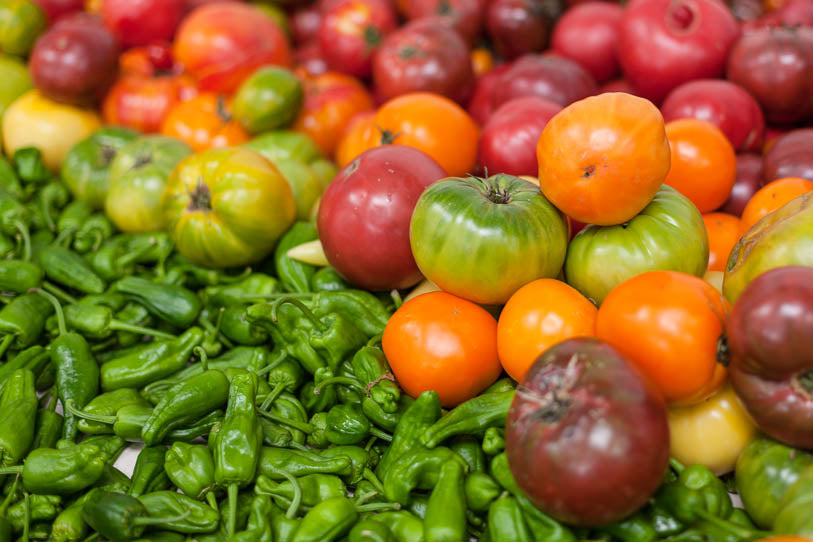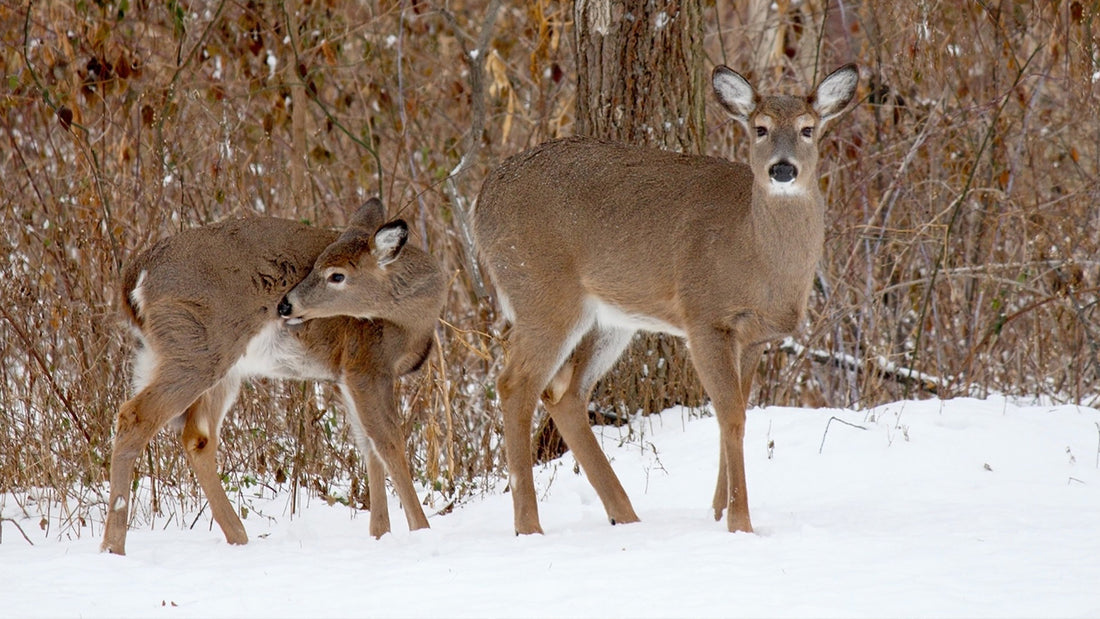What kind of deer-resistant vegetables can I plant in my garden?
Here's the thing about edible gardening -- deer agree with us most of the time on what's edible. The good, and rather surprising, news is that we eat some herbs, vegetables and berries the deer aren't so crazy about. Keep in mind there is no such thing as a "deer-proof" plant. Deer resistance is highly regional, seasonal, weather dependent, tied to food availability, and deer populations. Also, deer, like people, have different tastes in food. That said, these edible plants are at least worth a try outside the safety of a deer fence. Deer resistance is usually classified in three categories: Rarely Damaged, Occasionally Damaged, and Frequently Damaged. So, if you share your yard with a herd of deer you can still grow food that won't immediately be deer food.

Alliums
Our good friends of the allium family are favored for their pungency by man, but that quality makes beast turn up their noses at an offering of onions. If space in the deer fenced garden is at a premium plant your onions, chives, leeks, and garlic outside. Garlic is a fantastic companion plant for roses, which are on that frequently damaged list. Garlic planted with roses just might make the deer think twice about visiting your roses. Alliums are categorized as rarely damaged.Aromatic Herbs
We savor the aromas of sage, dill, fennel, oregano, marjoram, rosemary, thyme and mint. Deer however find these herbs too much for their delicate noses to handle. Plant your herbs anywhere you like without fear of deer. These herbs fall into the rarely damaged category. Basil is also considered deer resistant, but slide it into the occasionally damaged classification.
Solanaceous Vegetables
Solanaceous vegetables, also called the deadly nightshade group, are vegetables like tomatoes, potatoes, and peppers. Peppers and tomatoes carry the badge of rarely damaged. Potatoes are best put in the occasionally damaged slot.Artichokes
Once you have the artichokes growing you can leave one or two to flower -- the bees will arrive en masse to enjoy the bloom! Artichokes are rather prickly, so deer usually find something else to munch on. Grow artichokes from crowns in the winter or from seed in the spring. Artichokes are generally categorized as rarely damaged.Rhubarb
Rhubarb is a beautiful edible ornamental. With it's bright stalks and huge leaves it is quite a statement piece in the yard. Rhubarb is considered a rarely damaged plant.








23 comments
I have to say that the deer have destroyed my squash, munched on tomato tops, eaten petunia’s down to nothing, destroyed rhubarb and devoured peppers.
I’m an avid hunter and also maintain food sources for deer on my residential property. I can tell you without question that deer LOVE figs. There may be some species of figs they won’t browse but if I don’t get out and get my figs when they’re ripe, the deer will knock them off the tree and step on them to split them open to eat. If you live in an area where natural habitat isn’t enough to support the number of deer, they WILL eat everything and anything. In the winter when there is no quality food, the deer eat green briar and if that’s gone they’ll eat bark.
The deer eat everything on the list. “Eat” is the operative word here.
I have watched them extensively and this is what they do. They browse along and eat a leaf or the tip of everything they come across, everything. If they don’t like it they then move on. The next deer and the next days it is always the same. Soon all those plants are killed back whether the deer like them or not.
They taste just about everything that grows but they then move on if it is not to their liking. They don’t seem to remember from day to day either. Over and over again, every time they pass. Being retired I have lots of time to sit and observe. Many thoughts regarding deer, but my fence, described in another post here….works! Spendy, but my wife and I have owned three nurseries between us and we love to garden.
I built a fence that works very well! Deer will jump over a 6’ fence.
Cedar boards are only 6’ long. But I made the fence 7-1/2’ high this way:
I used the cedar boards from the ground up like this: I cut 10’ long 4"X4" treated posts down to 9 ft. Sunk them in holes 7-1/2 ft apart so that 7-1/2’ stuck up. I split treated 8 ft. 2" X 4"s in half and using inexpensive 90 degree brackets and short (1") sheet rock screws, I attached these split poles between the fence posts…first at 18" high then 5 ft high and then along the top of the fence posts. I then attached the cedar boards from the ground up using a roofing nailer (cheap at Harbor Freight) to attach the boards to the split poles. Naturally they attach at 2 places…the 18" and 5 ft high split poles. What you have is an attractive fence of cedar 6 ft high and then a split board running along the tops of the fence posts at 7-1/2 ft. The split poles are shortened accordingly.
The deer definitely see this added split board on top and it intimidates them….it is “other than” the cedar fence below. It seems to weird them out. Ribbons could be hung from or attached to the top split board also.
I installed 440 ft. of fence and in 6 years have NEVER had a deer jump it and we have lots of deer. An added bonus is small animals do not get in or out of the yard…Visitors with dogs can let them run free. Our yard is lush with plants…. fruit trees, bushes, and vines…. vegetables and flowers.
Mike, I have not had problems with deer eating my figs, but what may happen if deer browse the tree, and not really eat it (rather tasting it). If many go through and browse it, it could result in a tree with no leaves. Hopefully your fig will come back. But just in case you may want to protect it until it has recovered.